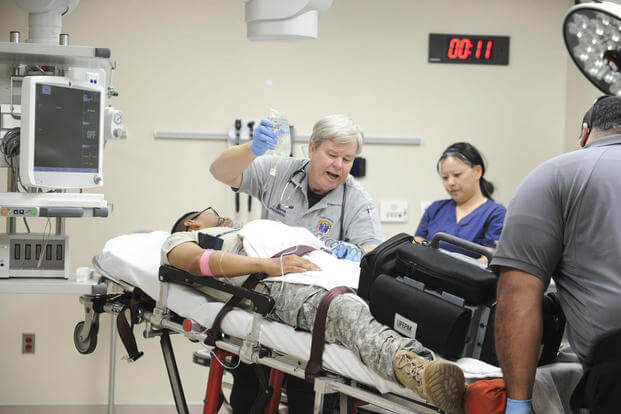At a time when many Americans are struggling with the rising costs of medical care and insurance, military members receive a valuable benefit in TRICARE, the Defense Department's health care system. TRICARE covers millions of service members and their families at generally lower costs than private-sector health insurance.
TRICARE combines the health resources of the military with networks of civilian health care professionals, institutions, pharmacies and suppliers to provide affordable access to high-quality health care services around the world. While it's a major money-saving benefit for military families, it's also a complex system with many terms and conditions. People with ties to the armed forces should take time to understand their eligibility and enroll in the plan that best meets their needs.
Who Qualifies
TRICARE is available to active-duty service members and retirees of the seven uniformed services: Army, Marine Corps, Navy, Air Force, Coast Guard, Commissioned Corps of the Public Health Service, and the Commissioned Corps of the National Oceanic and Atmospheric Association.
TRICARE is also available to immediate family members and survivors of military personnel. To be eligible, family members must be enrolled in the Defense Enrollment Eligibility Reporting System, better known as DEERS.
Members of the Reserve Forces and National Guard are eligible for a separate plan called TRICARE Reserve Select. They become eligible for full TRICARE benefits when they are called to active duty for more than 30 days.
Major Medical Options
Active-duty service members and their families are eligible for TRICARE Prime, the core military health care benefit offering the most affordable, comprehensive coverage. It's essentially free health care — no out-of-pocket costs for any type of care as long as care is received from the "primary care manager" or with a referral.
Other plans, such as TRICARE Select, come at a cost and are available to family members who might wish (or need) to see health care providers outside the military network.
Furthermore, variations of each TRICARE plan exist for military families serving overseas or in remote locations. For example, TRICARE Prime Remote (TPR) might be a good option for those who live in the U.S. but far away from any military medical facility.
Other TRICARE Benefits
Though "regular" TRICARE plans cover children of military personnel up to age 21, those dependents might be eligible for extended benefits under a program called TRICARE for Young Adults (TYA). The program is available to unmarried, adult children through age 26 who can't get health insurance from other sources such as an employer. However, recipients must pay the full cost, so it might make more sense to find coverage elsewhere.
Major medical coverage through TRICARE also covers many ancillary services, such as preventive medical procedures and mental health treatment.
Additionally, TRICARE provides a prescription drug plan, dental care and vision care to service members and their families, under certain provisions.
When You Leave the Service
Leaving the military is a time of financial transition, and ensuring adequate health care coverage after separation should be a chief concern. Service members who retire from the military remain eligible for TRICARE Prime until they qualify for Medicare at age 65.
When retirees become eligible for Medicare and enroll in Medicare Parts A and B, they have the option to supplement that coverage with a health plan called TRICARE For Life.
Service members who separate from the military before retirement may be able to continue major medical coverage temporarily through the Continued Health Care Benefit Program. This coverage is designed to serve as a bridge between TRICARE and a civilian health insurance plan that might be obtained through an employer or another source.
Finally, TRICARE also has a plan for retired Reserve members, National Guardsmen and their families, called TRICARE Retired Reserve (TRR).
For more information and eligibility requirements, visit www.TRICARE.mil.







